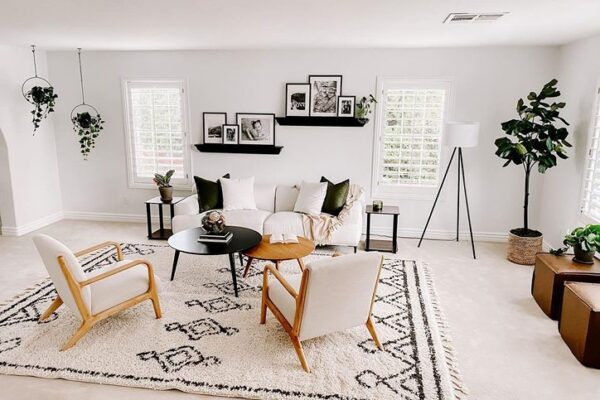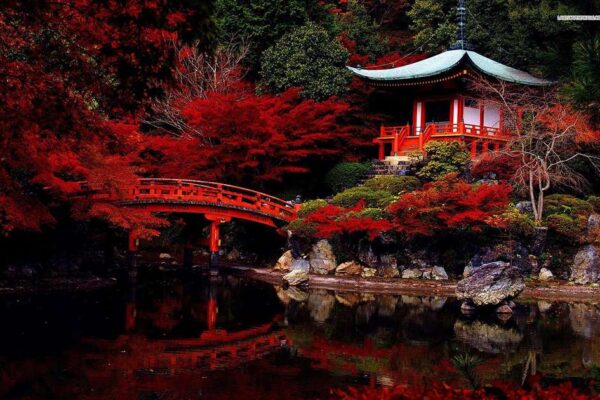12 Paint Colors to Transform Your Basement
If you want to maximize the potential of your home, your basement can be a great place to start. Despite being located below ground level and often lacking natural light, basements can be transformed into functional and welcoming spaces with the right approach. One effective way to enhance the look and feel of your basement is by choosing the right paint colors. Choosing the right paint colors for your basement can transform it from a dark and dreary space to a bright and inviting room.
When selecting paint colors for your basement, it’s essential to consider the purpose of the space. If you’re planning to use it as a relaxation area or an additional living room, soothing and calming colors like soft blues, greens, or muted yellows can create a cozy and inviting atmosphere. Alternatively, if you’re turning your basement into a game room or a play area for kids, you may want to experiment with bright and playful colors like pinks, oranges, or bright blues.
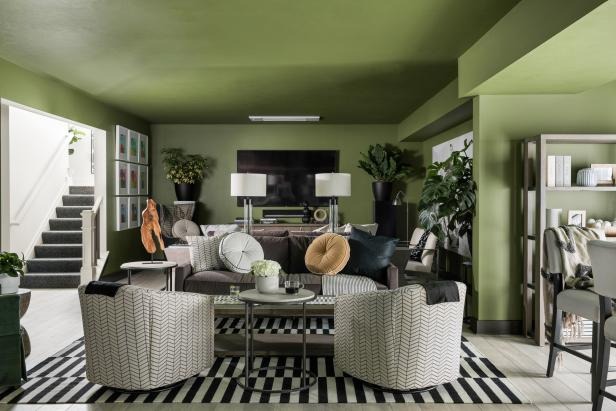
If you’re planning to create a media room in your basement, darker colors like navy blue, charcoal gray, or deep burgundy can work well to enhance the viewing experience. Combining these darker colors with neutral tones like beige, white, or gray can add a touch of sophistication and balance to the space.
Ultimately, the key to choosing the right paint colors for your basement is to consider how you’ll use the space and what kind of atmosphere you want to create. By taking the time to plan and experiment with different color schemes, you can transform your dark and dingy basement into a warm and welcoming extension of your home.
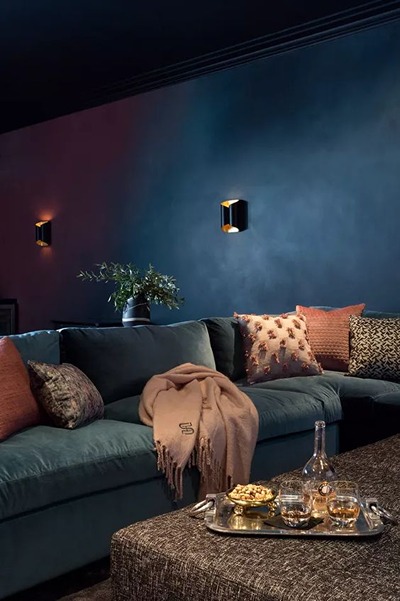
Let's start with paint colors
Selecting a paint color for your basement can be a daunting task given the vast array of colors available. However, by taking the time to consider your options, you can identify the perfect shade to suit your space. A well-chosen color can help transform your basement from a dull and uninviting space into a cozy and beautiful area that you’ll love to spend time in. Here are some paint color combinations to consider for your basement:
1. Mindful Gray
When it comes to choosing a paint color, soft grays are a popular choice among designers. This is because they have the ability to both brighten and soften a space, while also reflecting light. If you decide to go with a gray paint color for your walls, it’s important to not be afraid of adding pops of color throughout your decor.
By incorporating colorful accents like throw pillows or artwork, you can create a visually dynamic space that balances the calming nature of the gray walls. Additionally, gray is a versatile color that pairs well with a wide range of decor styles, so it’s a great option if you’re looking for a neutral color that won’t clash with your existing furnishings.
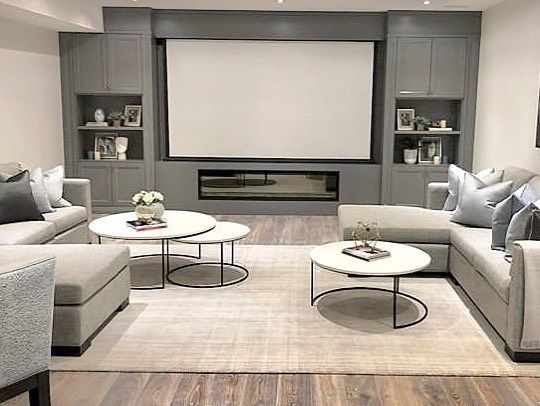
2. Openness with Whites
White is a classic and versatile color that can make your basement feel clean, bright, and spacious. It has a cheerful and timeless appeal, making it a great option if you’re unsure about what color to choose. White walls can help to diffuse light and create the illusion of a larger room, which can be particularly helpful if your basement lacks natural light or feels cramped.
Additionally, white is easy to decorate with and can be paired with a wide range of other colors and styles. If you already have white walls in your basement, applying a fresh coat with a glossy finish can really make your space shine and add some extra dimension. By using white as a base color, you can create a fresh and clean canvas for any decor style or design theme.
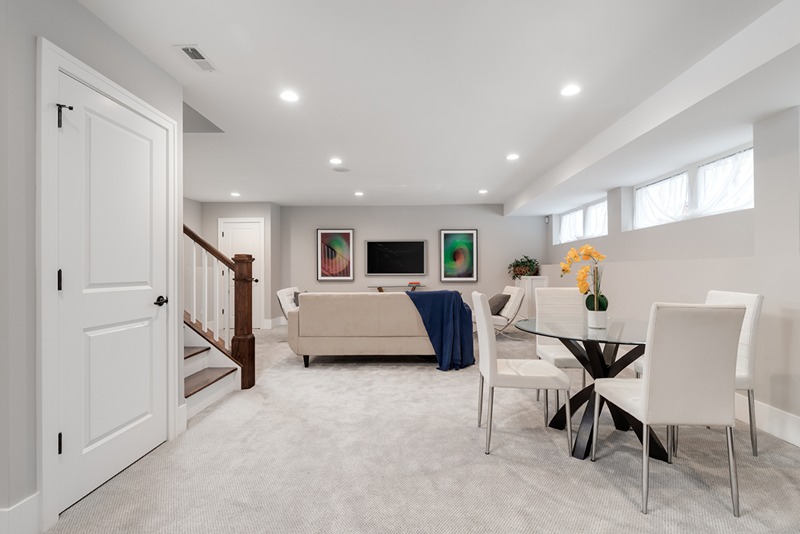
3. Blend of Brown and Gray: Taupe
If you’re looking to warm up a dark basement, taupe might be the perfect paint color for you. Taupe is a unique blend of brown and gray, creating a neutral tone that’s both versatile and easy to decorate with. This color can help to create a modern and inviting atmosphere in your basement, transforming it from a dull and uninviting space to a cozy and chic area in no time.
The lightness of the color allows it to reflect light, which can help to brighten up a space and make it feel more open and airier. Additionally, taupe is a great option if you’re looking for a color that won’t go out of style, as it’s a classic and timeless hue that can work well with a variety of decor styles. Whether you want to create a sophisticated and elegant space or a more casual and relaxed atmosphere, taupe can help you achieve your desired look.
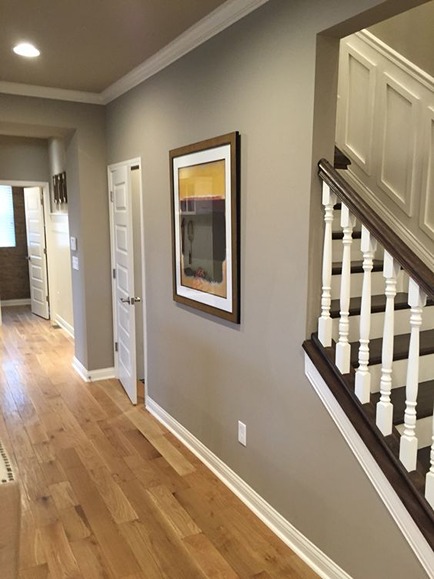
4. Create Illusion with Blacks
Usually, black paint can make a room feel smaller, but this isn’t always the case. The effect can depend on the specific shade of black that you choose. Opt for a soft black if you want to create a dramatic movie room or home theater. With proper lighting and appropriate decor, a black room can feel welcoming during the day and cozy at night. Another option is to paint only the ceiling black, which can give your basement a more industrial vibe and create the illusion of higher ceilings.
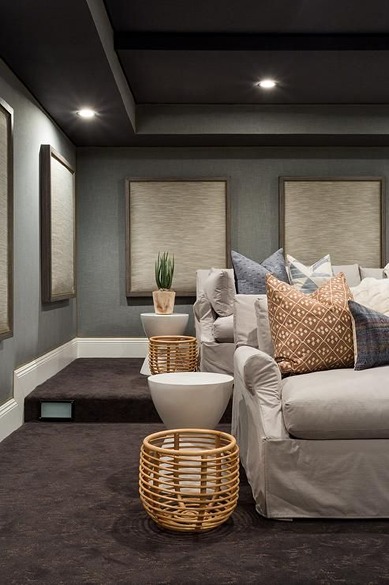
5. Color of Cream
Cream is an excellent choice if you want a color that’s not too stark like white, but not too warm like beige. This color has a nice balance of both, which creates a relaxing and inviting atmosphere in any room. Cream is a great neutral option that complements a wide range of decor styles, making it a versatile choice for your basement. This color can help to open up the space and make it appear larger, which is particularly useful if you have a small basement.
Cream works well with wood furniture and floors, which are common in many basements. The combination of cream walls and natural wood elements can create a warm and cozy atmosphere that’s perfect for relaxing or entertaining. Overall, cream is a great choice if you want a color that’s versatile, relaxing, and visually appealing.
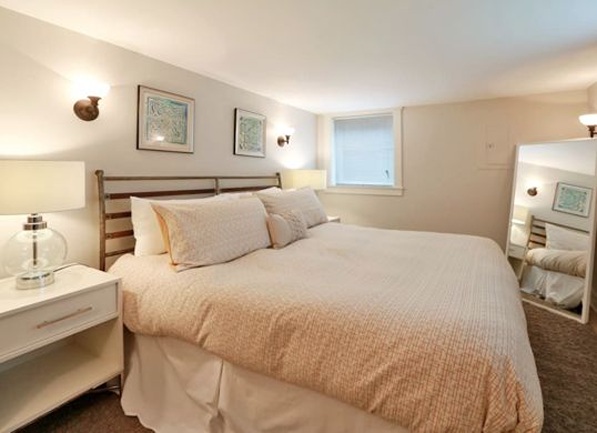
6. Greens: Shades of emerald, lime, and forest
Green is a versatile color that can add dimension and depth to your basement. There are many shades of green to choose from, ranging from bright lime to deep forest green. Lighter shades of green can help to bring more energy into your space, making them an excellent choice for a home gym or workout area. These shades can help to create an invigorating and refreshing atmosphere that’s perfect for staying active and motivated.
On the other hand, darker shades of green can create a happy and cozy lounge feel. This can be an excellent option for a family room or entertainment area. Shades like sage are particularly soothing and restful, making them an ideal choice for a bedroom or meditation space.
Green is also a great way to bring the outdoors in and can turn your basement into an enchanting guest or craft room. Overall, there are many different shades of green to choose from, so it’s important to find one that matches your personal style and the intended use of your basement.
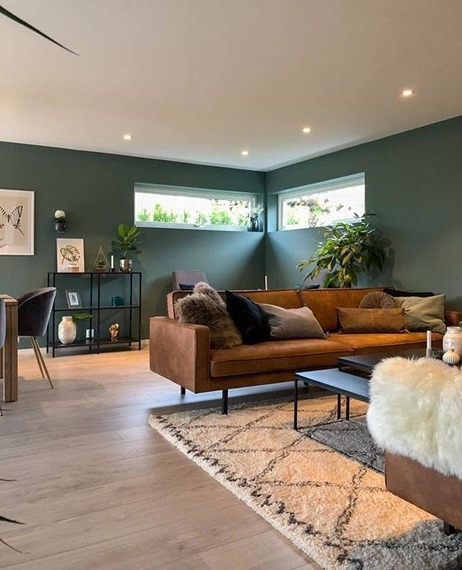
7. Tints of Browns
Browns are colors that exude warmth and comfort, and they are available in various shades, including butterscotch, chocolate, and more. They also have undertones ranging from warm reddish to cool gray-brown, making them a natural and earthy choice.
Painting your basement walls brown can transform it into a second living area that is cozy and versatile, with a modern or traditional feel depending on your preference. To achieve a fabric-like appearance on your walls, it is recommended to select a brown paint with a more matte finish instead of a shiny or glossy one.
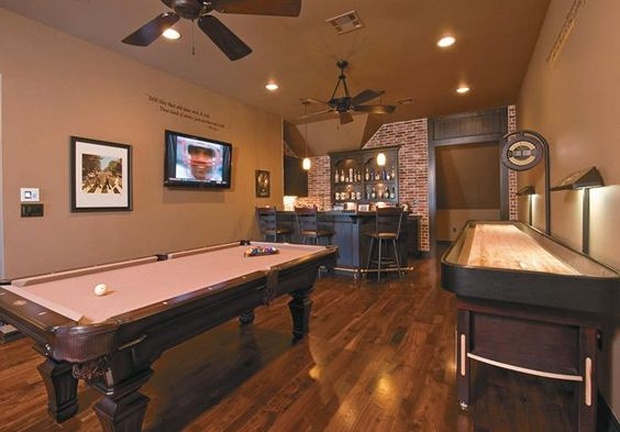
8. Yellows Hues
Yellow is a bright and cheerful color that can bring a playful vibe to your basement, whether it has natural light or not. Using yellow paint on your walls can help to stimulate your senses and create a sunny, welcoming atmosphere. This can be particularly beneficial if your basement is used as a playroom or office space, as it can help to keep the mood light and fun.
Vibrant shades of yellow can add a pop of energy to your space, while muted shades can create a more relaxed and calming atmosphere. When choosing a shade of yellow, it’s important to consider the other colors and decor in the room, as well as the intended use of the space. By doing so, you can find the perfect shade of yellow to keep your basement feeling light, fun, and cheery.
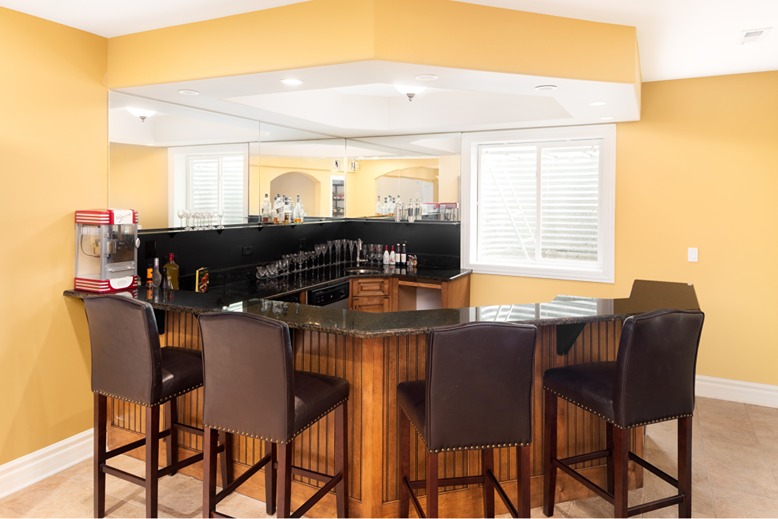
9. Bold Reds
Red is a bold and dynamic color that can bring energy and personality to your basement. Muted reds and pinks can create a fresh and feminine look, while moody reds can add a sense of drama and intensity to the space. If you’re looking to create a specific mood or theme in your basement, consider using red as an accent color or painting one wall as a bold statement.
For example, an accent wall in a deep red shade could create a cozy and intimate atmosphere in a basement bar or entertainment area. Pairing the red wall with leather bar seats and dark wood accents can further enhance the pub-like feel of the space.
When using red in your basement, it’s important to balance it with other colors and decor elements to avoid overwhelming the space. By incorporating muted or neutral tones and carefully selecting complementary accents, you can create a cohesive and inviting atmosphere that showcases your personal style.
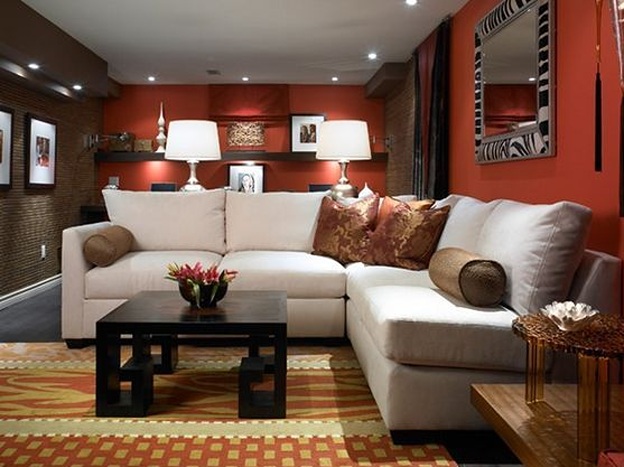
10. Shades of Blues
Blue is a versatile and popular color that can be used to add a touch of personality and style to your basement. When choosing a blue paint color, it’s important to find a shade that brings life to the space without appearing overly saturated. Light blue is an excellent choice if you want to create a calming and tranquil environment in your basement. This shade can help to promote relaxation and reduce stress levels, making it an ideal option for a meditation room or home gym.
On the other hand, if you want to create a more sophisticated and warmer atmosphere, teal might be the perfect option for you. This shade of blue has a greenish undertone that adds a touch of elegance and refinement to any space. If you’re looking for a more soothing and charming look, deep navy blue can be an excellent choice. This color can create a cozy and intimate atmosphere that’s perfect for a home theater or family room.
Finally, if you want to keep your basement feeling cool and intimate, turquoise might be the perfect shade for you. Overall, there are many shades of blue to choose from, so it’s important to find one that reflects your personal style and the intended use of your basement.
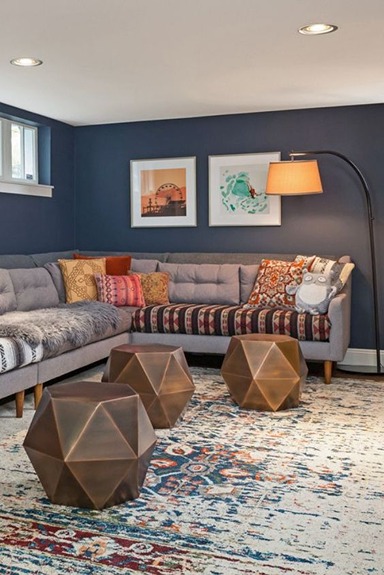
11. Variation of Orange Color
Choosing orange paint for your basement can bring a lively and energetic atmosphere to your space. Whether you go for a bold and vivid orange or a softer, peachy shade, it’s important to consider the furniture and accents you use to complement it.
Wooden and cream furniture can be great choices to balance out the brightness of the orange. Many people choose orange for their basement gym, as it can inspire motivation, energy, and positivity during workouts. With the right furniture and decor, an orange-painted basement can be transformed into a vibrant and inviting space.
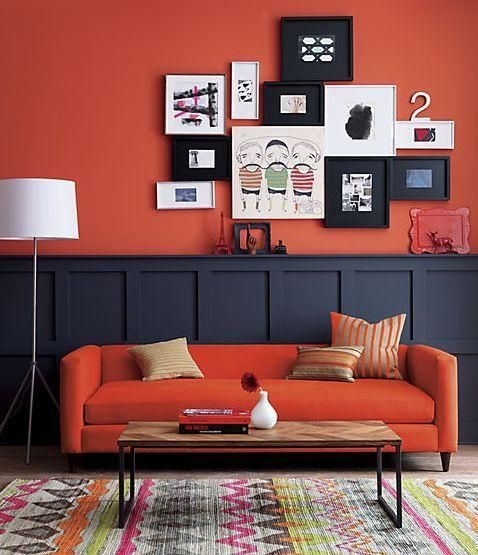
12. Range of Purples
Lighter shades of purple can add a creative and inspiring touch to your basement, while darker shades like plum can create a sense of elegance and sophistication.
By painting your basement with purple hues, you can create a unique and stylish space that is perfect for a home office or work area. Consider adding a plush velvet chair to your desk to enhance the luxurious vibe of the room.
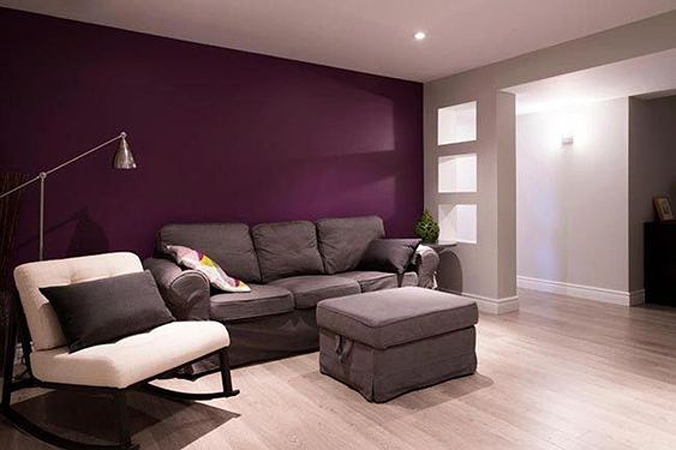
Key Painting Tips
- Choosing a paint color for your ceiling that is one shade lighter than your walls can create a lighter and more cohesive look for your room.
- When considering darker paint colors for your walls, it’s important to take into account the height of your ceiling and the amount of natural light in the room. Darker colors can make a room feel smaller and more enclosed, so if you have a low ceiling or minimal natural light, it’s best to avoid using dark colors.
- Bright and saturated colors tend to work best in rooms with ample natural light, as they can enhance the energy and vibrancy of the space.
- Lighter colors can help to reflect light off of walls, making the room feel brighter and more open. This can be particularly helpful in rooms with limited natural light.
- When choosing paint colors for a room, it’s important to avoid using too many different colors. Using too many colors can make a space feel chaotic and overwhelming. Instead, try to stick to a few complementary colors that work well together.

